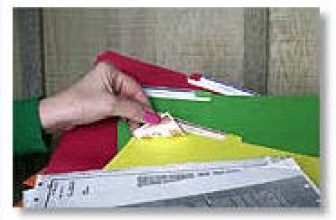
Austrian parquet flooring manufacturer uses semi-active RFID technology to monitor floor temperature
[ad_1]
As a decoration company, Austrian Jilg Parkett has been laying wooden floors (or parquet floors) for family homes, commercial buildings, museums and palaces for decades. However, it is the same as other companies in the parquet industry. Each contract Jilg Parkett won represents not only a business opportunity, but also a risk, which may not become apparent until a few years after the floor has been laid.
Many flooring companies are facing the pressure of lagging progress in the project. In order to avoid penalties and catch up with the progress, carelessness and negligence may occur in their work. Due to the high cost of wooden flooring and installation, customers may sue the flooring company quickly if there are problems such as cracks or unevenness on the floor, which will cause both parties to face courts. Helmut Jilg of Jilg Parkett often witnesses such cases as experts.

Jilg Parkett’s fidbox reader
Taking into account the litigation risks faced by the company and the industry, Jilg developed fidbox (floor identification box) in 2004, a tool for measuring floor temperature, wood moisture and subsoil moisture. These data can be used to determine the party at fault in litigation.
The fidbox is 150 * 45 * 6 mm in size, weighs 56 grams, and contains a semi-passive 869 MHz UHF RFID tag that meets the ISO 18000-6B standard. The equipment also includes sensors that can periodically test the temperature and humidity above the floor and below the subfloor, and then send the information to a standard reader via RFID.
The device performs tests at user-defined intervals, usually 8 hours, or as long as 10 years. When measuring humidity and temperature, the fidbox is awakened and returns to sleep after the measurement is performed, thereby extending the battery life. For example, the sensor records data other than the predefined parameters. Then fidbox will collect information more frequently. These data can be used to show the environmental conditions around the floor.
Jilg Parkett worked with the Austrian University of Applied Sciences, Holzforschung, the Wood Research Association, and Tricon, an RFID software provider and integrator, to develop this device and began selling fidbox in early 2008.

When installing fidbox, the staff cut a small piece on the underside of a piece of floor, and use adhesive tape to stick the sensor inside
When installing the fidbox, the staff cut a small piece on the underside of a piece of floor, used adhesive tape to stick the sensor inside, and then placed the wooden floor and the embedded fidbox on top of the facing concrete.
A sensor on the side of the fidbox measures the temperature and humidity of the air in the cavity where the fidbox is located.Another fidbox side sensor also measures the temperature and humidity of the air
These data can be used to calculate wood moisture and source-above or below the floor. If it comes from under the floor, the flooring company is responsible for the floor problem, if it comes from above the floor, the user is responsible for the loss (inappropriate adjustment of the floor or room temperature).
When users report that there is a problem with the floor, the staff uses a handheld RFID reader to collect sensor data. The worker came to the place where the fidbox was installed, and then used the reader to collect the storage data of the device. The reader searches for the device by sending a sound signal. When the reader is closer to the device, the louder the sound. When the handheld is within 1.5 meters of the fidbox, the tag is awakened and the reader reads the tag.
fidbox can also store other types of flooring information, such as wood type, building information, and flooring company information.
[ad_2]




